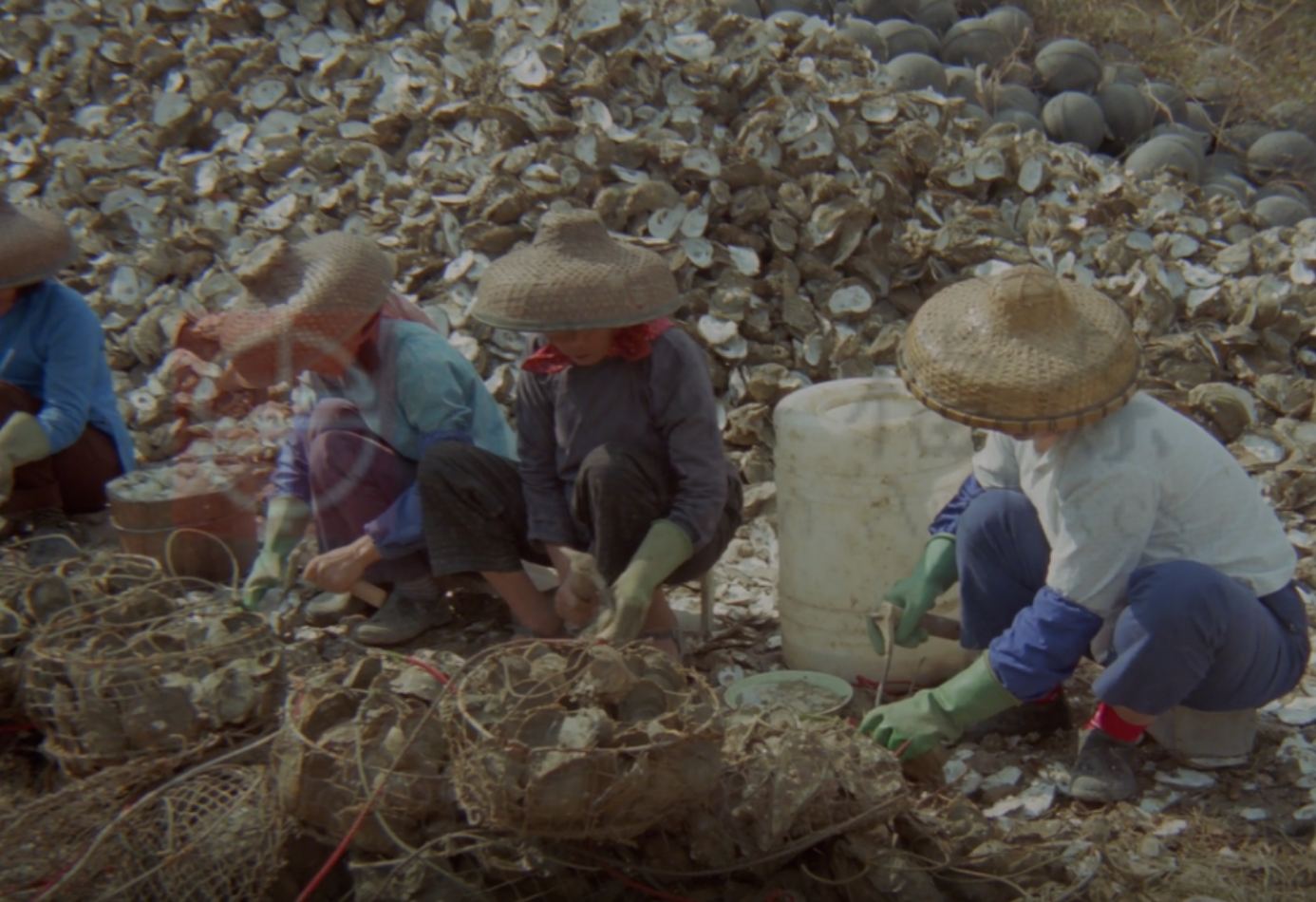
深圳市宝安区沙井镇有着“千年蚝乡”的美誉,从这里出产的沙井蚝是驰名中外的土特产,也是深圳这座城市独有的记忆。蚝民们的生产习俗,也被列为非物质文化遗产代表项目,延续着深圳珍贵的历史文脉。
Shajing, a small town in Bao’an District, has been known as the 1,000-year-old Hometown of Oysters. The oysters produced in Shajing are not only a local product well-known in China and overseas, but also serves as a unique Shenzhen memory. The traditional practice of farming oysters is listed as an intangible cultural heritage that reflects the cultural texture of the city.
蚝,学名牡蛎。沙井蚝因个体肥壮,色泽乳白,嫩而无沙,口感爽脆,1980年获农牧渔业部“国内质量最佳奖”。因其含有丰富的蛋白质和矿物质,含碘量为牛奶和蛋黄的200倍,又被誉为“海底牛奶”,是一种既营养又美味的食物。用它加工制成的蚝豉和蚝油,也深为中外人士所喜爱,畅销于全国及世界各地。
The oysters produced in Shajing are known for being fat and juicy. In 1980, Shajing oysters won the China’s Best Quality Award by the ministry of agriculture, animal husbandry and fishery. The dried oysters and oyster oil processed from Shajing oysters are also popular all over the world.
你了解过蚝的养殖历史吗?“薄宦游海乡,雅闻归靖蚝。”北宋诗人梅尧臣的诗句是我国人工养蚝最早的文字记载,“归靖蚝”“靖康蚝”都是沙井蚝的古称。明清时期,沙井蚝业发展迅速。明万历年间,蚝民发明了以罐瓦陶片为附着器养蚝的新方法。新中国成立后,随着沙井蚝养殖规模进一步扩大,沙井成立了蚝业合作社,该合作社于1956年、1957年被评为“模范合作社”,1958年获得了“国务院奖状”。
Oyster farming in Shajing originated during the Northern Song Dynasty (960-1127) and prospered in the Ming and Qing dynasties (1368-1912). Between 1573 and 1620, oyster farmers invented a new way to raise oysters by utilizing ceramic tiles. After the founding of the People’s Republic of China, an oyster farming cooperative was founded in Shajing. In 1956 and 1957, it was honored as a model cooperative, and in 1958, it received a certificate of merit awarded by the State Council.
1983年前后,蚝民们引进新技术,用浮筏将蚝吊起来养殖。这样做的好处是,能培育出不带泥味、饱满肥美的蚝肉,同时避免了蚝受到淤泥覆盖而死亡的问题。也是从这一年起,沙井以异地养殖为突破口,在阳江、台山、惠东沿海打造了三个新的养殖基地。就这样,一代代沙井人将传统品牌完好保存了下来,沙井蚝的发展“堪称广东水产史上的奇迹”。实行改革开放后,沙井蚝田面积不断扩大,产量提升,促进了蚝村经济繁荣,为深圳创造了良好的经济效益。
Around 1983, oyster farmers in Shajing adopted a new technique that raised oysters on rafts. In this way, they could not only harvest fat oysters free of the smell of mud, but also solved the problem of oysters dying from being enveloped in mud. In the same year, Shajing built three farming bases in Yangjiang, Taishan and Huidong. After the reform and opening up, the Shajing oyster farms were expanded with growing yield, which not only boosted Shajing’s economic development, but also facilitated the economic output of Shenzhen.

蚝民采蚝
Oyster farmers are harvesting oysters.
沙井蚝民们在长期的生产生活中,形成了一套完整、讲究、科学的生产习俗,具有一定的历史、文化和经济价值。在2007年、2022年,沙井蚝民生产习俗先后被深圳市人民政府、广东省人民政府列为第一批市级非物质文化遗产代表项目和第八批省级非物质文化遗产代表性项目。
During their long-term development of farming, Shajing’s oyster farmers have established a comprehensive, specific and scientific system of oyster raising, which is valuable in terms of history, culture and economic development. In 2007 and 2022, the oyster raising practice of Shajing was listed as an intangible cultural heritage respectively by the Shenzhen and Guangdong governments.
从2004年至今,沙井镇每年都会在年末举办沙井金蚝美食民俗文化节,人们可以在这个节日回忆历史,感受深圳独特的民俗文化,展望来年的美好生活。
At the end of each year since 2004, an oyster cultural festival is held at Shajing, where people can look back on the history, enjoy the local folk culture, and look forward to the beautiful life of the next year.
今日互动:您品尝过沙井蚝吗?您觉得沙井蚝怎么做最美味呢?欢迎留言分享,小i将在留言中选取幸运儿送处小礼物。
Today's topic: Have you ever tasted Shajing oysters? What is the best way do you know to cook Shajing oysters? Feel free to leave your comments and luck people will receive gifts.

来源:深圳市档案馆、i深圳
Source: Shenzhen Archives, iShenzhen
编译:深圳政府在线、Shenzhen Daily、GDToday
Transedited by: Shenzhen Government Online, Shenzhen Daily, GDToday